https://ift.tt/rpJPKG3
New WEF Report Reveals Jobs on the Brink of Extinction
Hello everyone! I reviewed the report published on the Future of Work and wanted to share the insights I gained as a data analyst with hackernoon readers. Between 2025 and 2030, a major transformation is expcted in the labor market, some professions will grow rapidly, while others will gradually decline. During this process, the rise of fields such as artificial intelligence, big data, fintech, and renewable energy is remarkable, while professions that involve manual processes are expected to decline. If you are ready, let’s discover together what the future of work will hold! 🚀
Drivers of labour-market transformation 👩🏻💻
This chapter provides a picture of how companies expect these macrotrends to drive industry transformation by 2030.
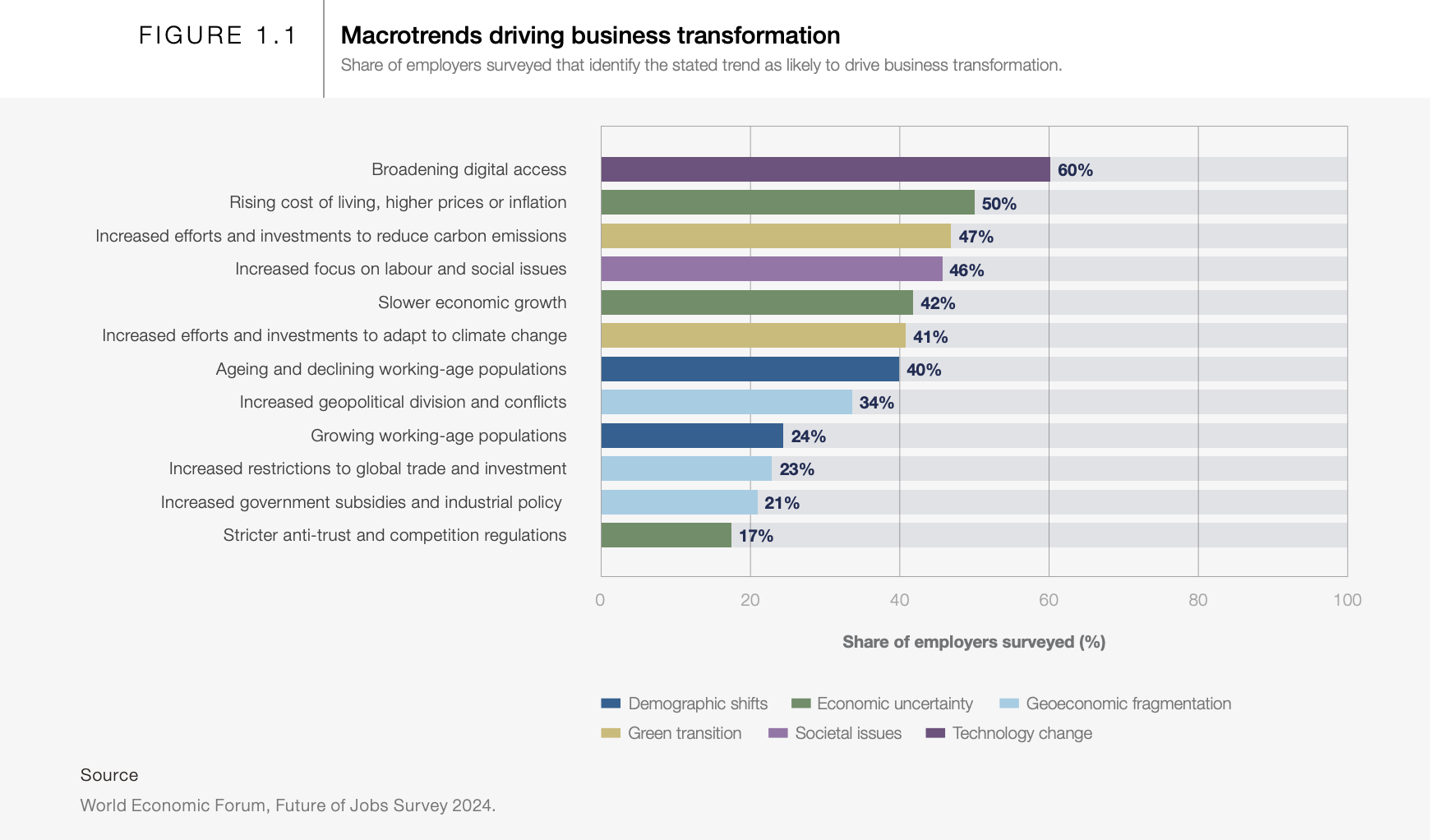
📌 Digitalization, green economy and workforce transformation stand out as the three main themes that will determine the future of business.
📌 Businesses need to increase digital access, optimize cost management and invest in environmental sustainability strategies for sustainable growth.
📌 Steps should be taken regarding employee rights and workforce diversity, as these factors are among the important factors affecting the long-term success of companies.
📌 It will be a critical necessity for companies to create flexible plans against uncertainties and strengthen risk management strategies.
\
2023’s report 💨
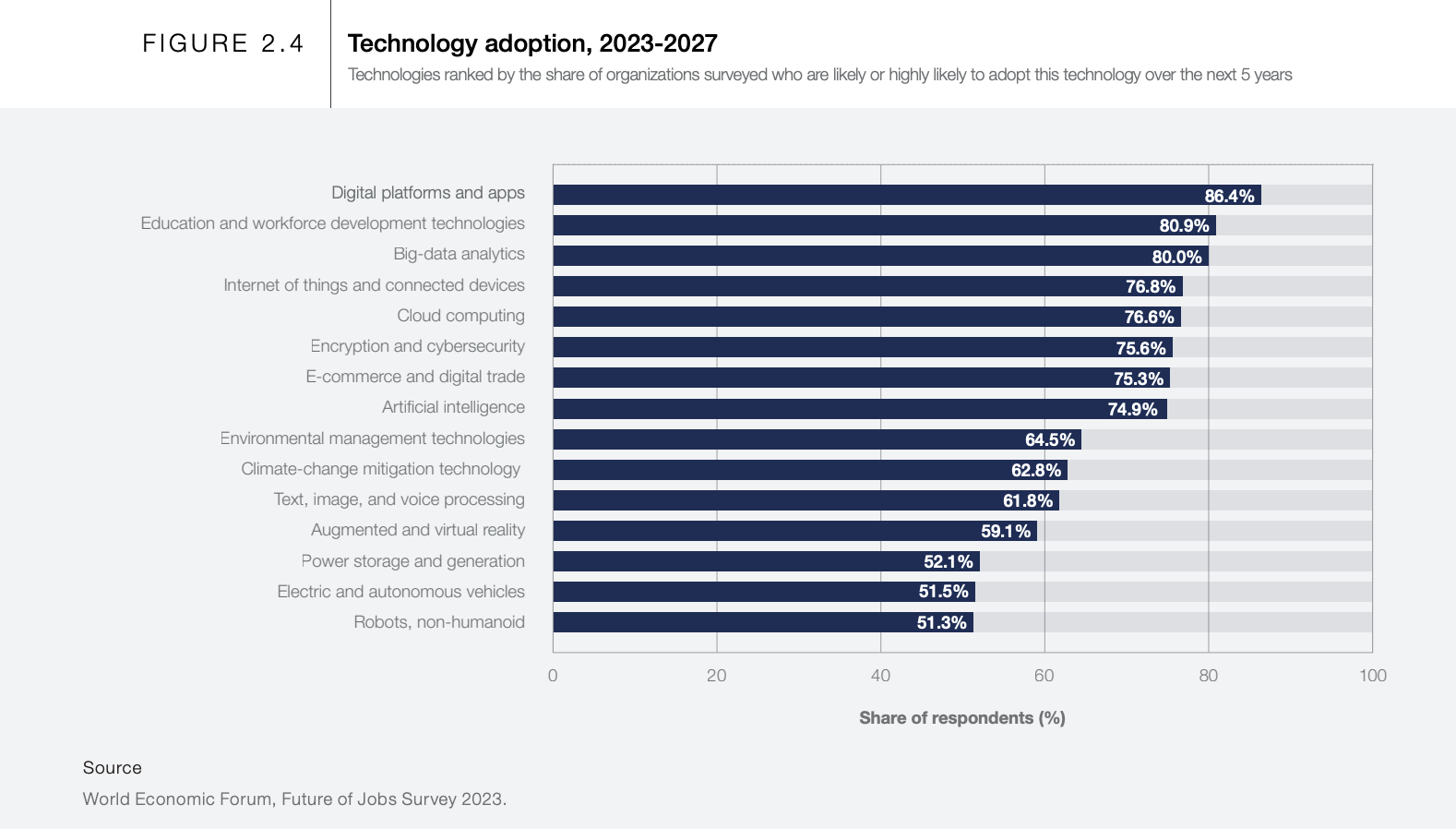
2024’s report 🌍
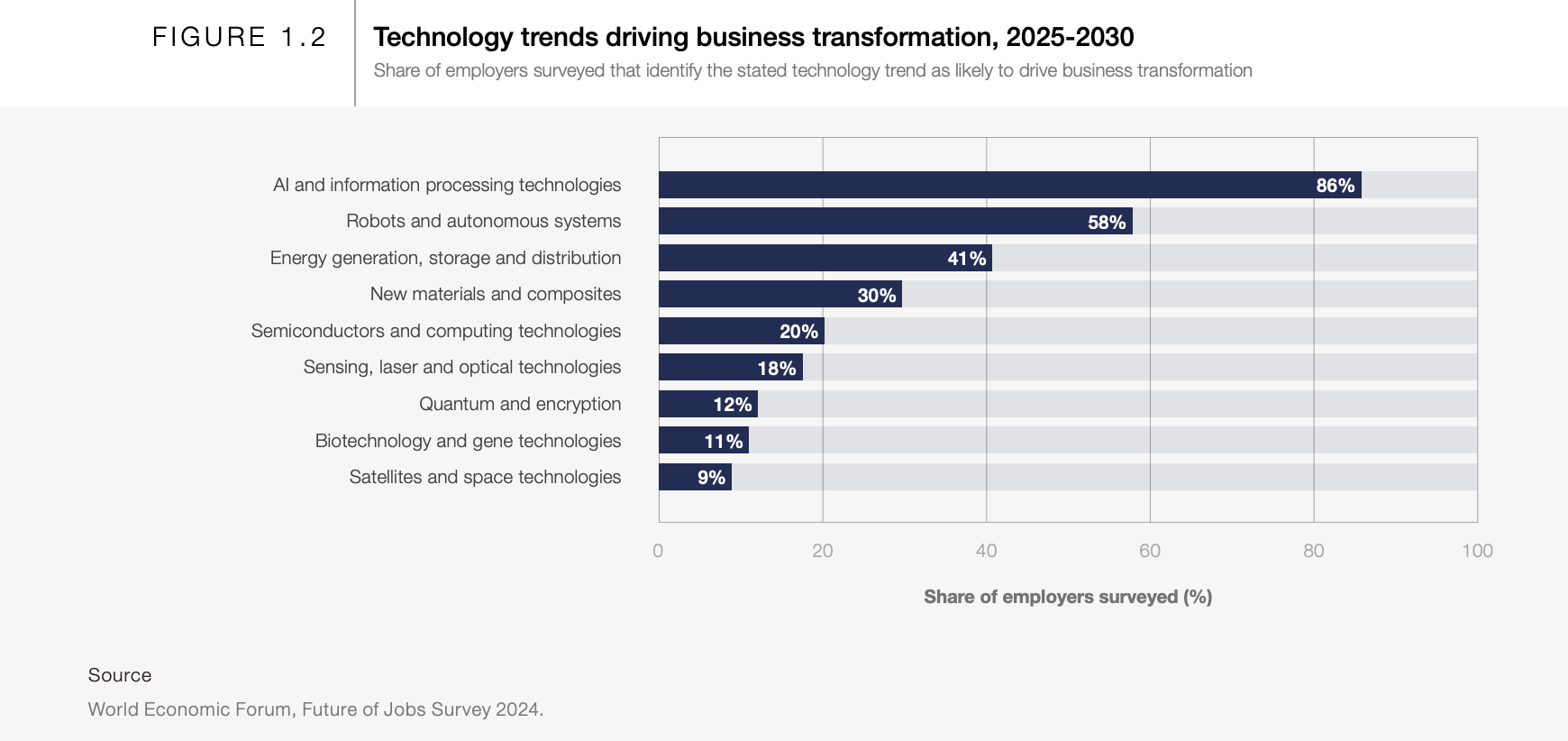
📌 Artificial intelligence and robotic systems stand out as the biggest transformation factors. AI and automation knowledge will be critical skills.
📌 Companies investing in green energy technologies will come to the fore. Specializing in renewable energy and energy storage can increase career opportunities.
📌 Fields such as biotechnology, quantum computing and space technologies will show more growth in the future and offer new job opportunities.
📌 Employees who adapt to technology and acquire new skills will gain a competitive advantage in the job market.
\n
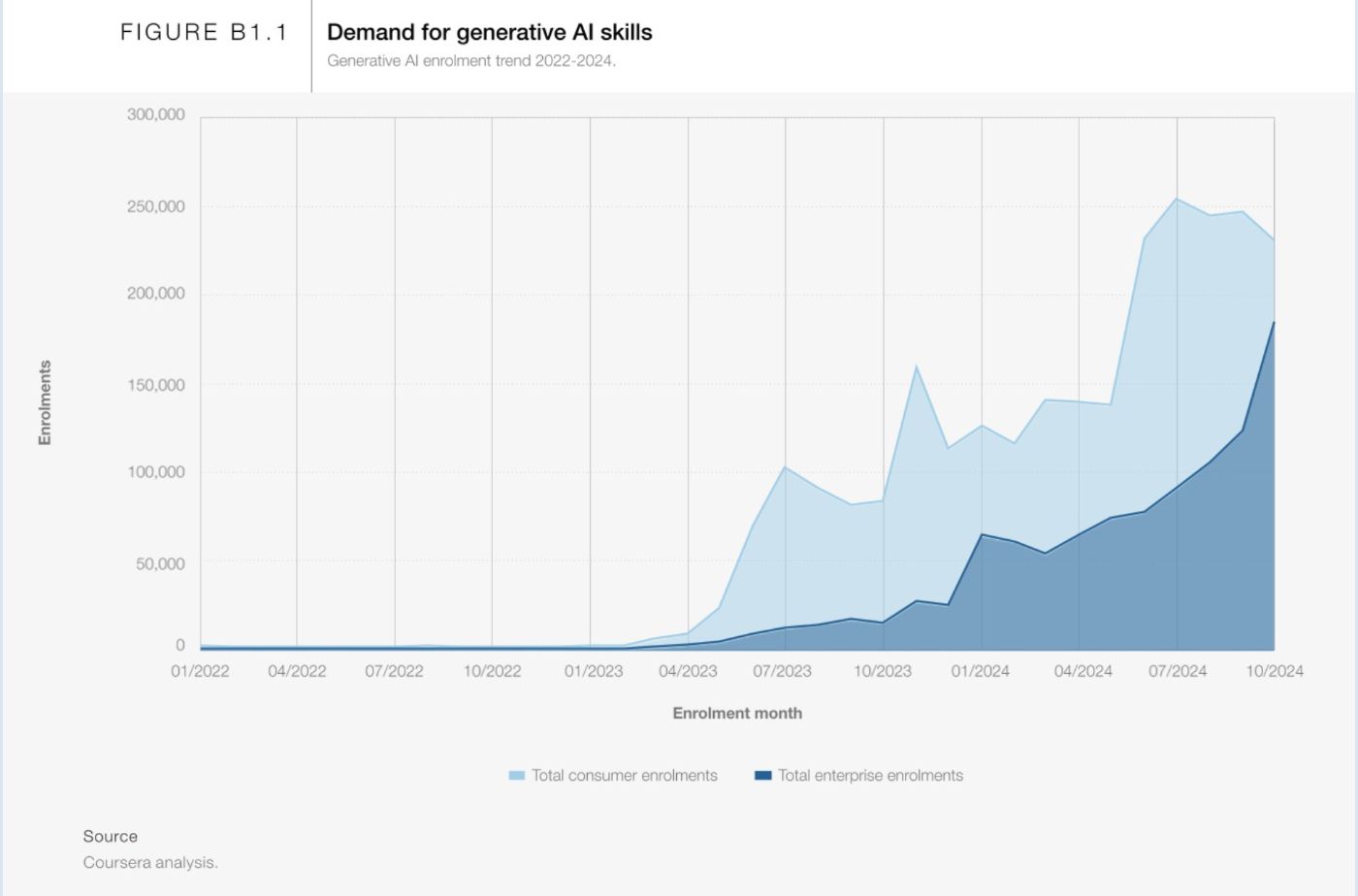
In the graph above, it is seen that there are serious peaks between February-July 2023 and April-July 2024. The reflection of these peaks in enterprise enrolment was not at a parallel rate to total consumer enrolment.
:::tip
Key milestones:
- The release of ChatGPT-4 allowed generative AI to reach a wider audience. (March 2023)
- The entry of competitors such as Google Bard and Claude AI into the market caused the technology to attract more attention.(March 2023)
- Google’s announcement of the PaLM 2 model and its aggressive promotion of its AI strategy. (March 2023)
- Meta and Amazon’s announcement of AI-based models and investments led companies to allocate more funds to AI technologies, increasing competition.
- The popularization of artificial intelligence courses on platforms such as YouTube, Coursera, and Udemy increased interest in generative AI.
- The strike of Hollywood writers and artists over concerns about job losses related to AI caused much more discussion of AI technologies. (July 2023)
:::
\
📌 Factors Causing Individual Usage to Increase Faster:
✅ Users start testing free or low-cost AI tools
✅ ChatGPT, Bard, and other tools become popular and accessible to everyone
✅ Rapid adoption of AI in individual processes such as content production, coding, and training
\
📌 Factors Causing Enterprise Registrations to Increase Slower:
❌ Companies conduct detailed testing processes for AI integration
❌ They adopt a wait-and-see approach due to concerns about data security and regulations
❌ High costs and economic uncertainties slow down AI investment decisions
❌ Employee training processes take time
\
🚀 What to Expect?
🔹 Enterprise AI adoption will increase gradually in the long term, as larger-scale AI uses will come into play as companies get used to the technology and integration processes accelerate.
🔹 In 2024 and beyond, corporate registrations can be expected to increase more significantly, especially as the impact of AI on business processes is better understood.
Jobs outlook 🚀
\
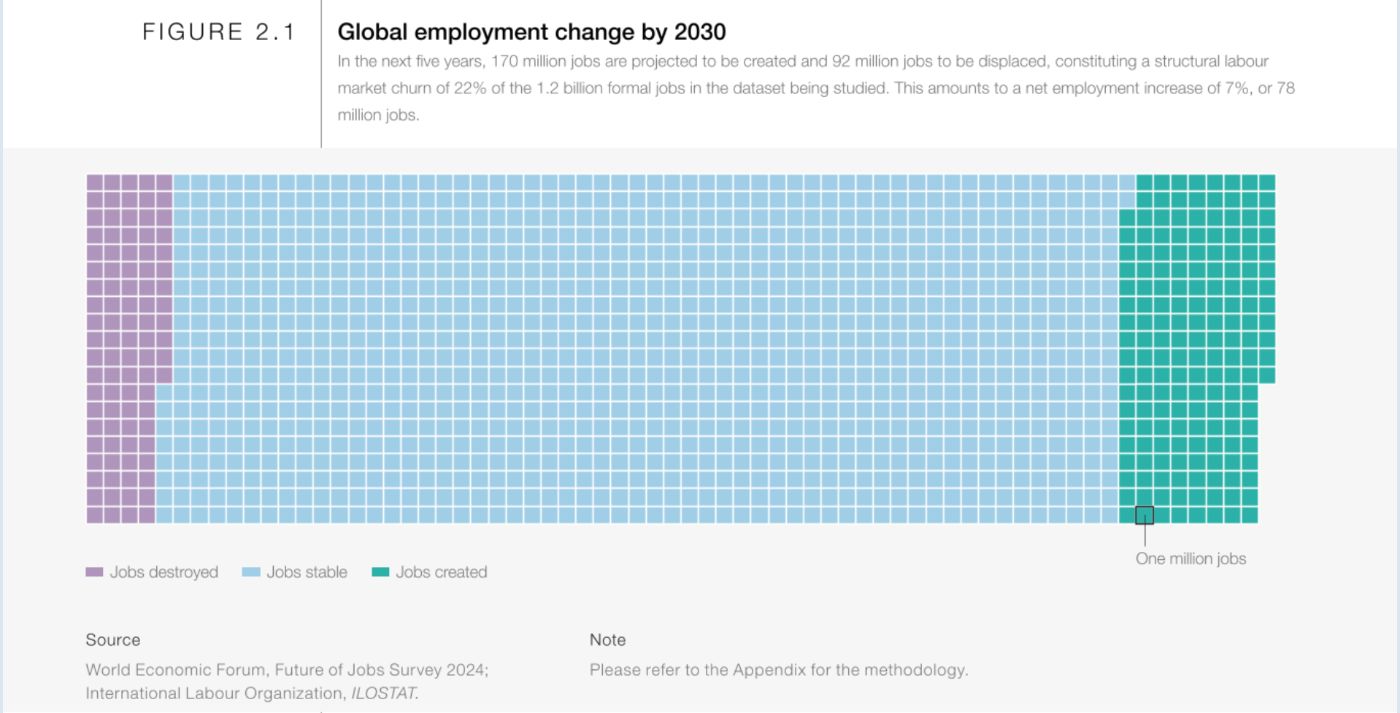
| Report Year | New Jobs (Million) | Lost Jobs (Million) | Net Change (Million) | Labor Market Churn Rate |
|—-|—-|—-|—-|—-|
| 2023 Report | 69 | 83 | −14 (−2%) | 23% (of 673 million employees) |
| 2025 Report | 170 | 92 | +78 (+7%) | 22% (of 1.2 billion employees) |
📌 There will be a major transformation in the labor market.
📌 While artificial intelligence and automation will cause some jobs to disappear, they will also create new opportunities.
📌 Gaining competence in digital skills, data science, artificial intelligence and sustainability will become critical.
📌 Considering that 22% of the workforce will undergo transformation, individuals and companies will need to adapt to this change.
\
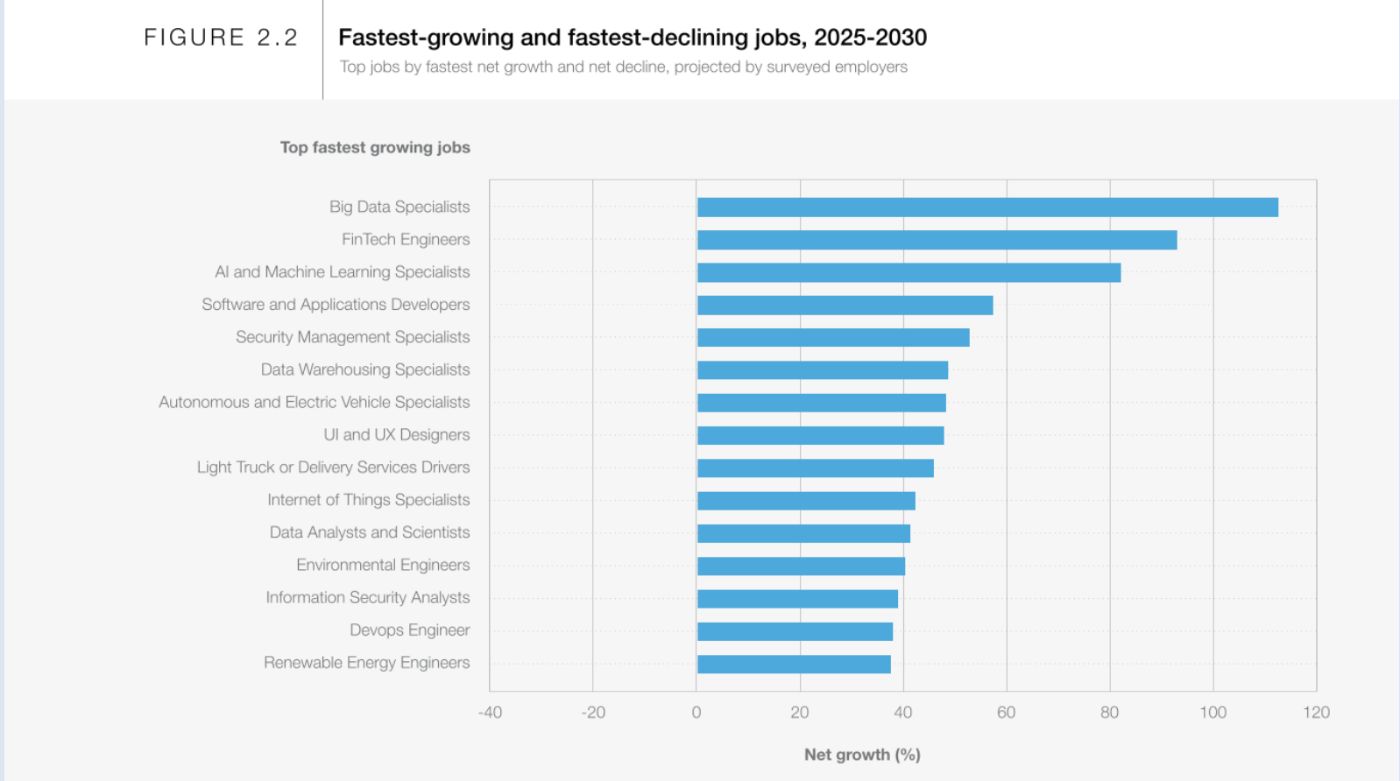
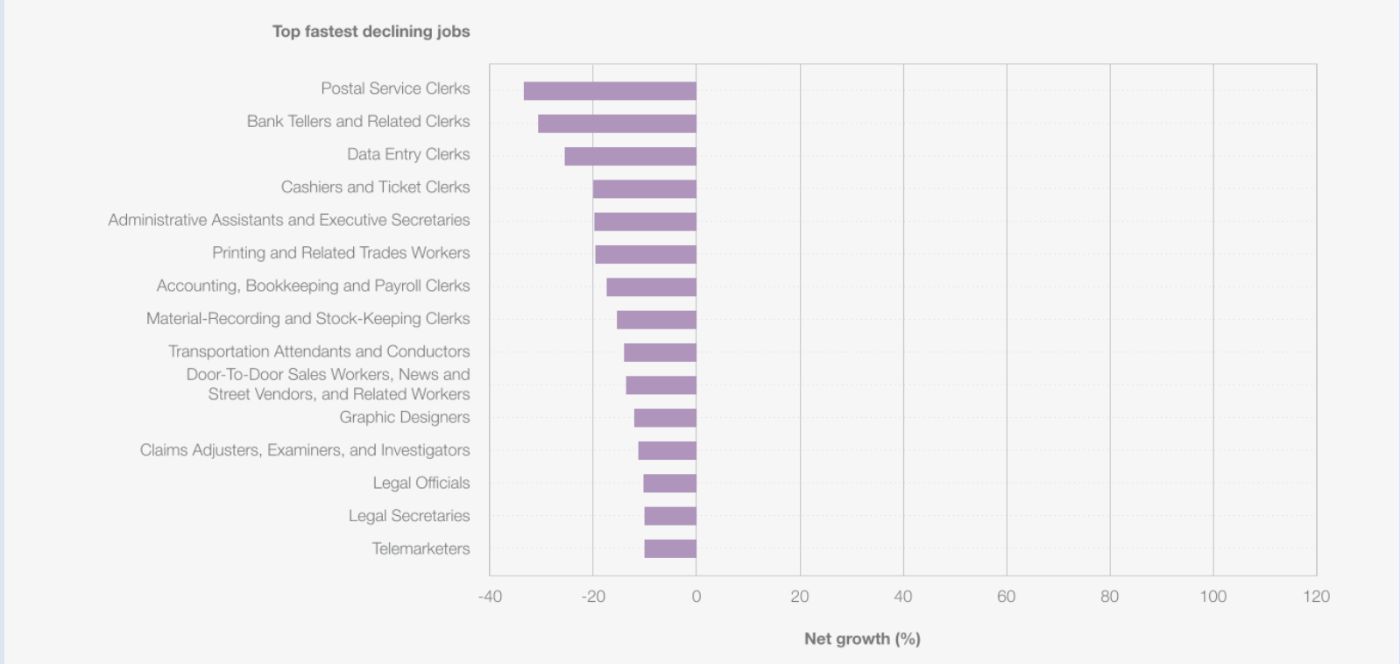
📌 Jobs that focus on technology are growing fast because big data specialists have grown by 100% and AI & machine learning specialists by 80%, making data and AI skills very important in the job market.
📌 Jobs that involve manual tasks are decreasing because data entry clerks have declined by 30% and cashiers by 25%, showing that automation and self-service solutions are replacing traditional roles.
📌 Jobs in sustainability and energy transformation are increasing because renewable energy engineers have grown by 40% and electric vehicle specialists by 50%, reshaping the job market with a green economy.
📌 People need to improve their digital skills and data literacy to find new job opportunities because technology and sustainability jobs are becoming the most in-demand fields in the future job market.
\
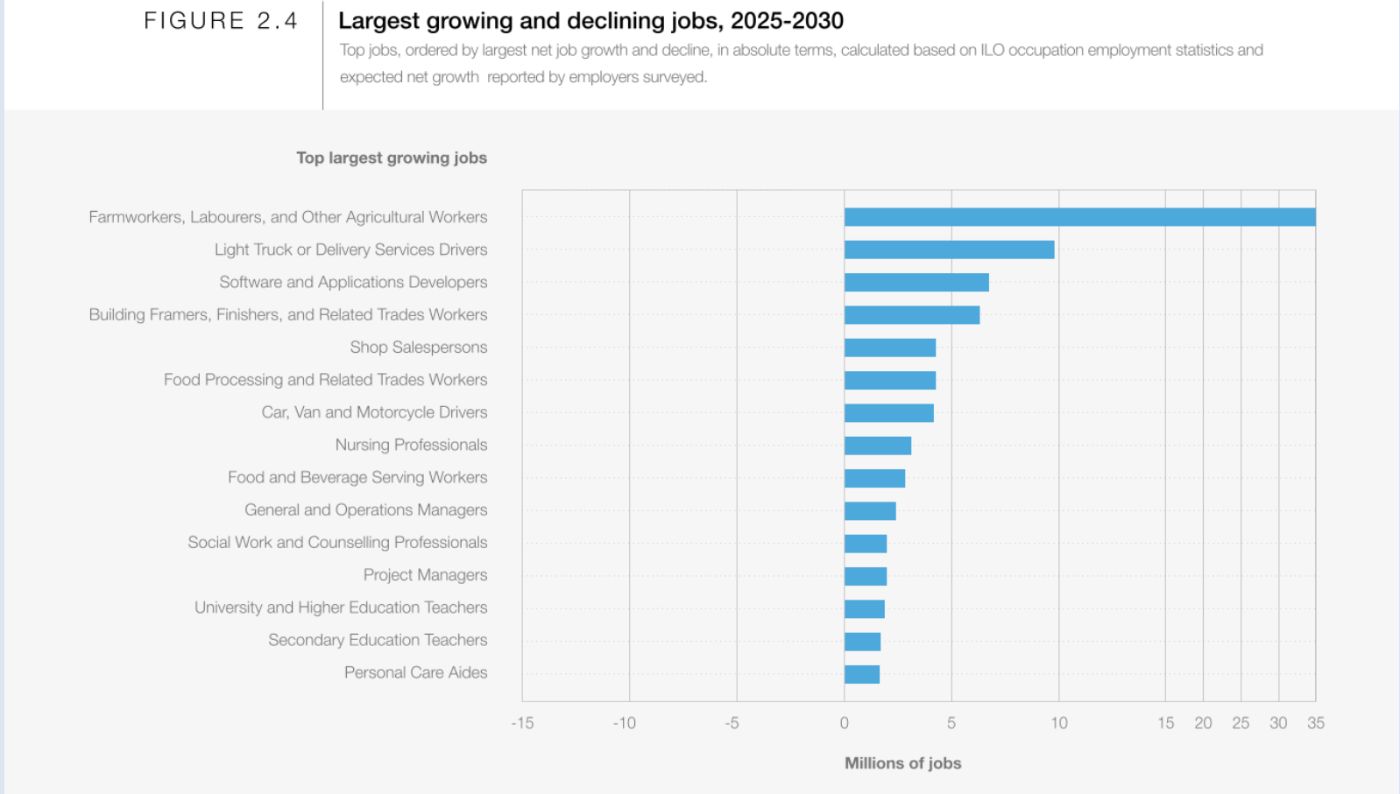
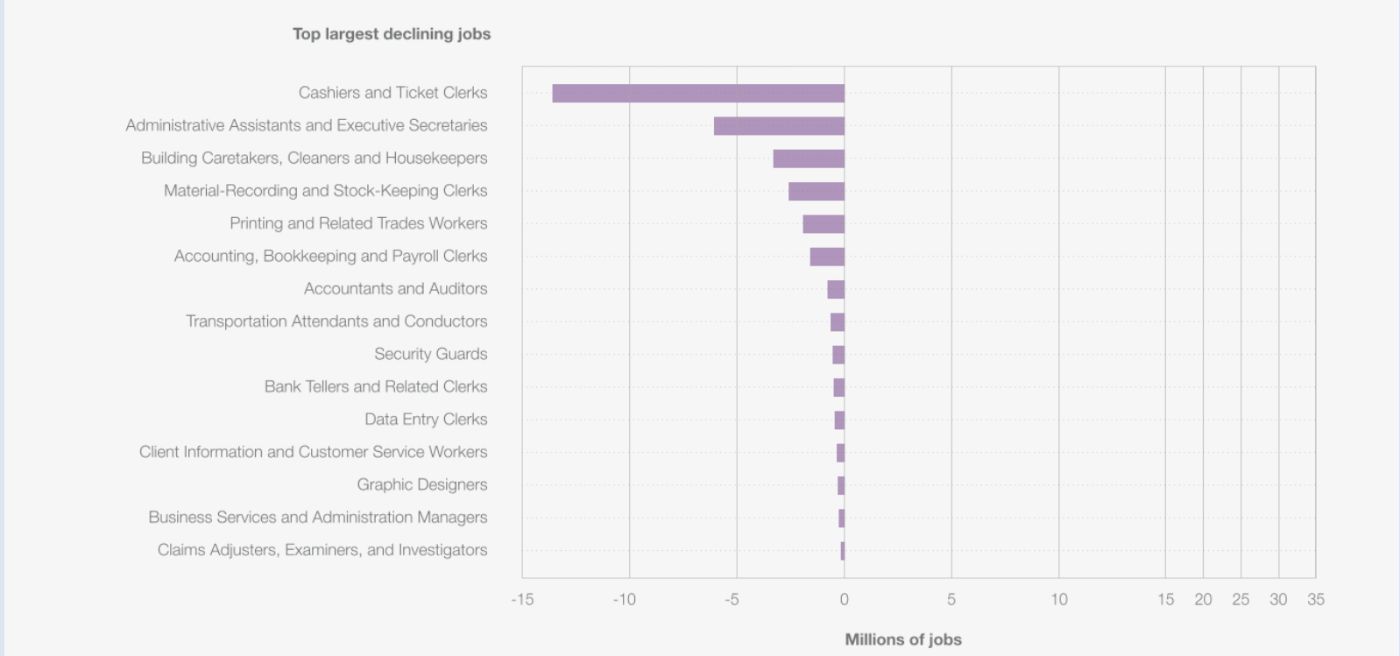
\
📌 50% of total job growth comes from agriculture, logistics and technology, with farmworkers, delivery drivers and software developers among the fastest-growing occupations.
📌 55% of job losses are in occupations that involve routine manual work, and automation, AI and digitalization are rapidly reducing these roles.
📌 Healthcare and education sectors will account for 10-15% of total growth, with manual and administrative jobs the areas with the most job losses.
📌 Investing in digital skills and data literacy will make it easier to transition from sectors experiencing job losses to sectors that are growing.
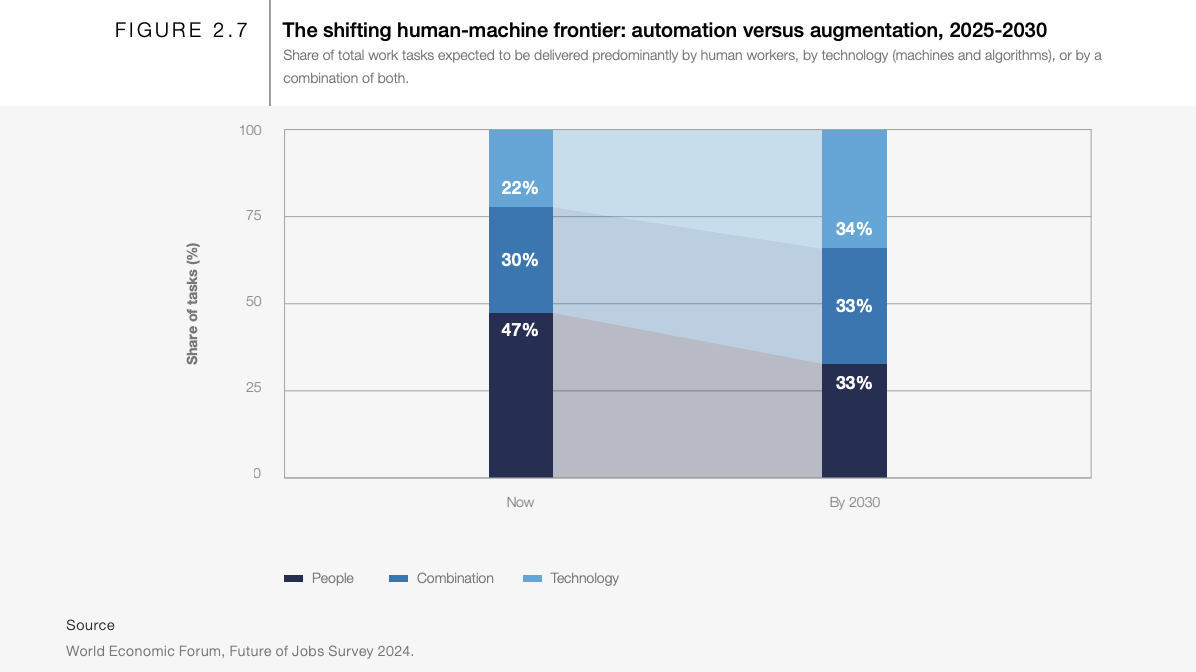
📌 Automation is increasing its share of the workforce by 55%, leading to machines taking on more roles.
📌 Human power is losing 30% of its job duties and moving towards more strategic and creative roles.
📌 Human-machine collaboration is increasing by 10%, indicating that AI and automation will play a supporting role in business processes.
📌 In order to adapt to this change, it is critical for employees to increase their digital skills and gain competencies to collaborate with automation.
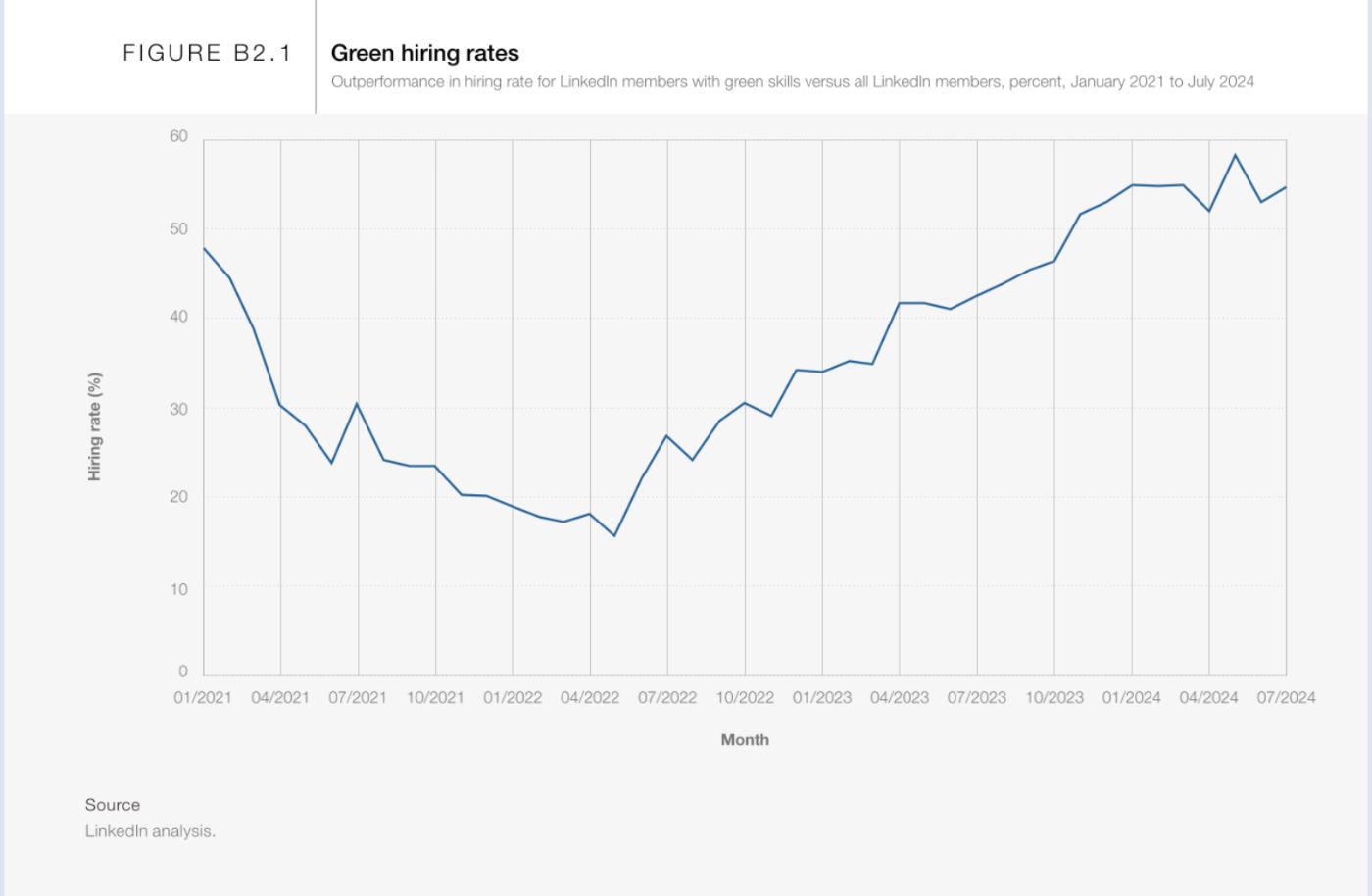
:::tip
Key milestones:
📌 2021-2022: The Downturn
- Due to economic uncertainty after the pandemic, companies postponed their sustainability investments.
- Due to global energy crises and inflation pressures, companies prioritized short-term financial goals.
📌 2022-2023: Recovery and Increase
- Incentive packages were announced in major economies such as the EU and the US to achieve carbon neutrality targets.
- Companies accelerated their sustainability policies and started investing more in green energy sectors.
- Decisions taken at global climate summits such as COP27 increased the need for employees with green skills in the business world.
📌 2023-2024: Green Job Market Reaching Peak
- Major investments were made in the renewable energy sector (solar, wind, hydrogen energy).
- New job areas such as sustainable finance, carbon trading, environmental engineering and ESG expertise have grown rapidly.
- Job opportunities have increased for engineers, consultants and project managers working in the green economy.
:::
📌 The hiring rates of professionals with green skills increased rapidly after 2022 and reached a peak in 2024.
📌 Sustainability policies, green energy investments and ESG-focused business strategies have created new opportunities in the labor market.
📌 Specializing in environmental sustainability, carbon management and renewable energy will be a great advantage in increasing job opportunities in the future.
Skills outlook 🤓📚
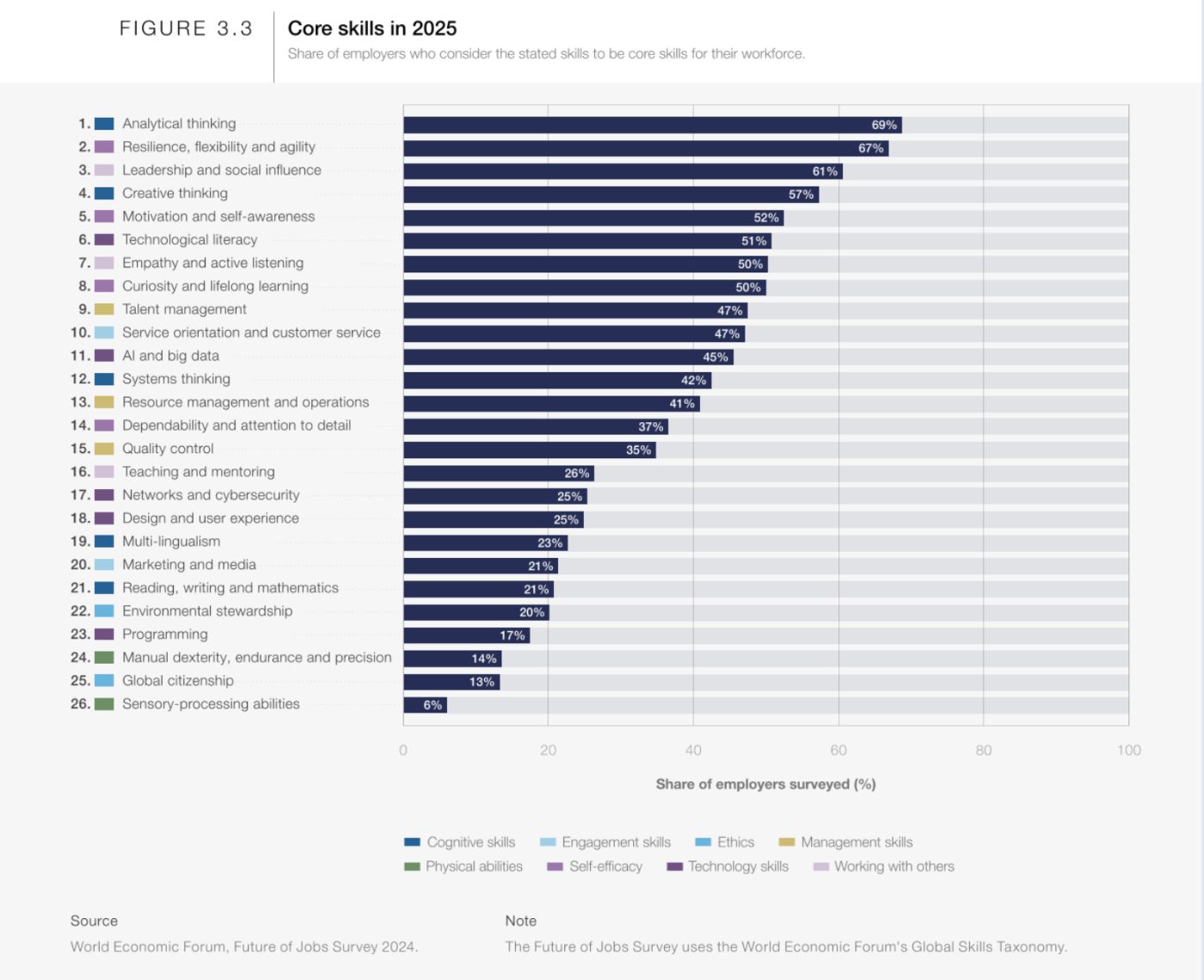
📌 69% of employers see analytical thinking as the most critical skill.
This shows that problem-solving and data-driven decision-making processes are becoming increasingly important in the business world.
📌 resilience, flexibility and agility skills are second with 67%.
It is seen that the need for employees who can quickly adapt to change and produce solutions in times of crisis is increasing in the business world.
📌Technology literacy (51%) and artificial intelligence & big data knowledge (45%) are now among the critical workforce competencies.
As digital transformation accelerates, employees are expected to understand, process and integrate data with technology.
The high level of human-centered skills such as leadership and social influence skills (61%), empathy and active listening (50%) shows that people management maintains its importance as automation increases.
📌 Artificial intelligence and big data knowledge are among the top 10 skills with 45%, while programming skills remain at only 17%.
This shows that technical skills are important, but everyone should be able to work with AI and data analysis without having to be a developer.
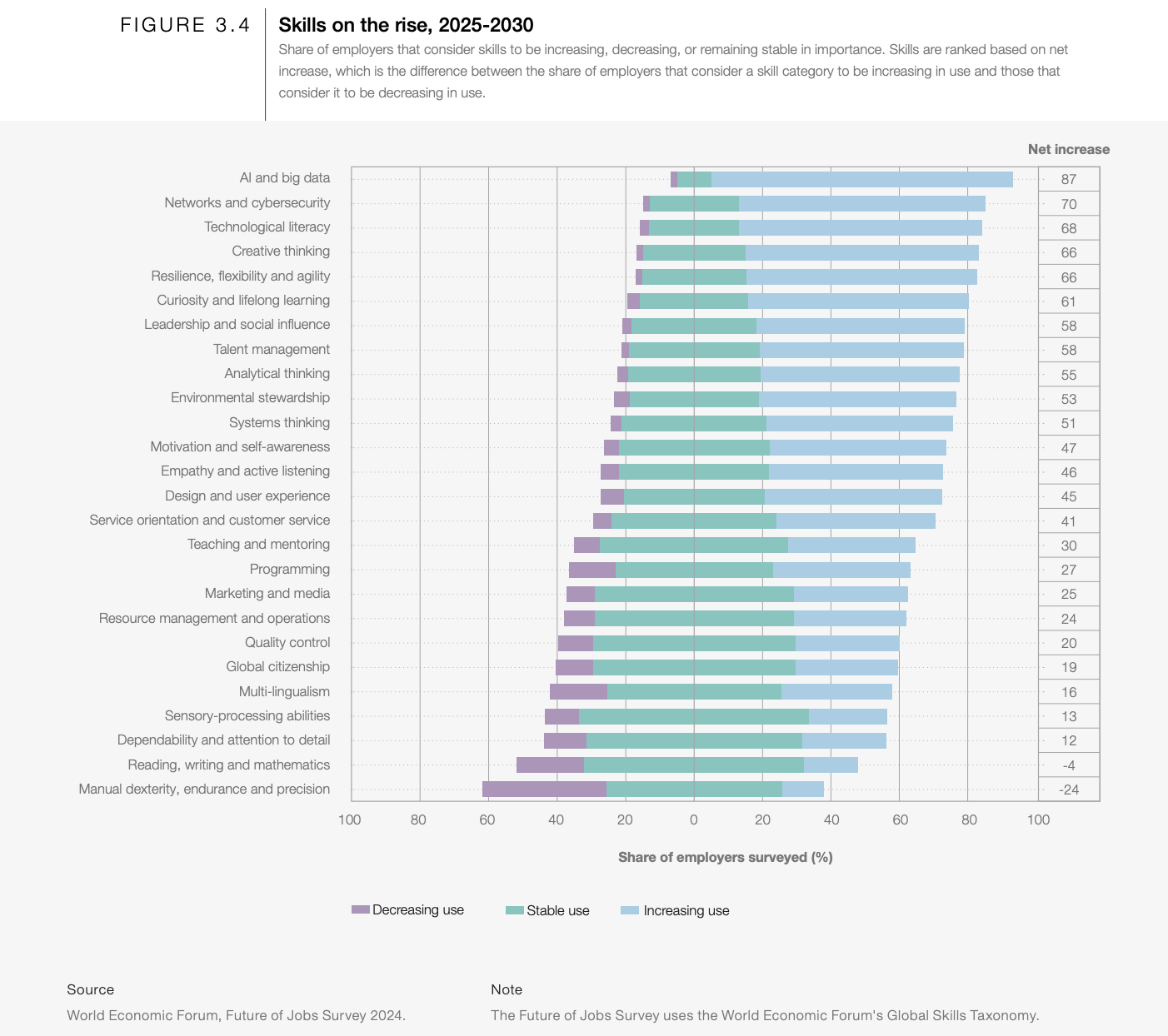
📌 Cybersecurity skills are becoming one of the most important job areas of the future with a net increase of 70%.
📌 While manual skills are decreasing by 24% with the rise of automation, cogntive and technology-oriented skills are coming to the fore rather than physical jobs.
📌 Analytical thinking and systems thinking are increasing by 50%+, showing how important data-driven decision making has become in the business world.
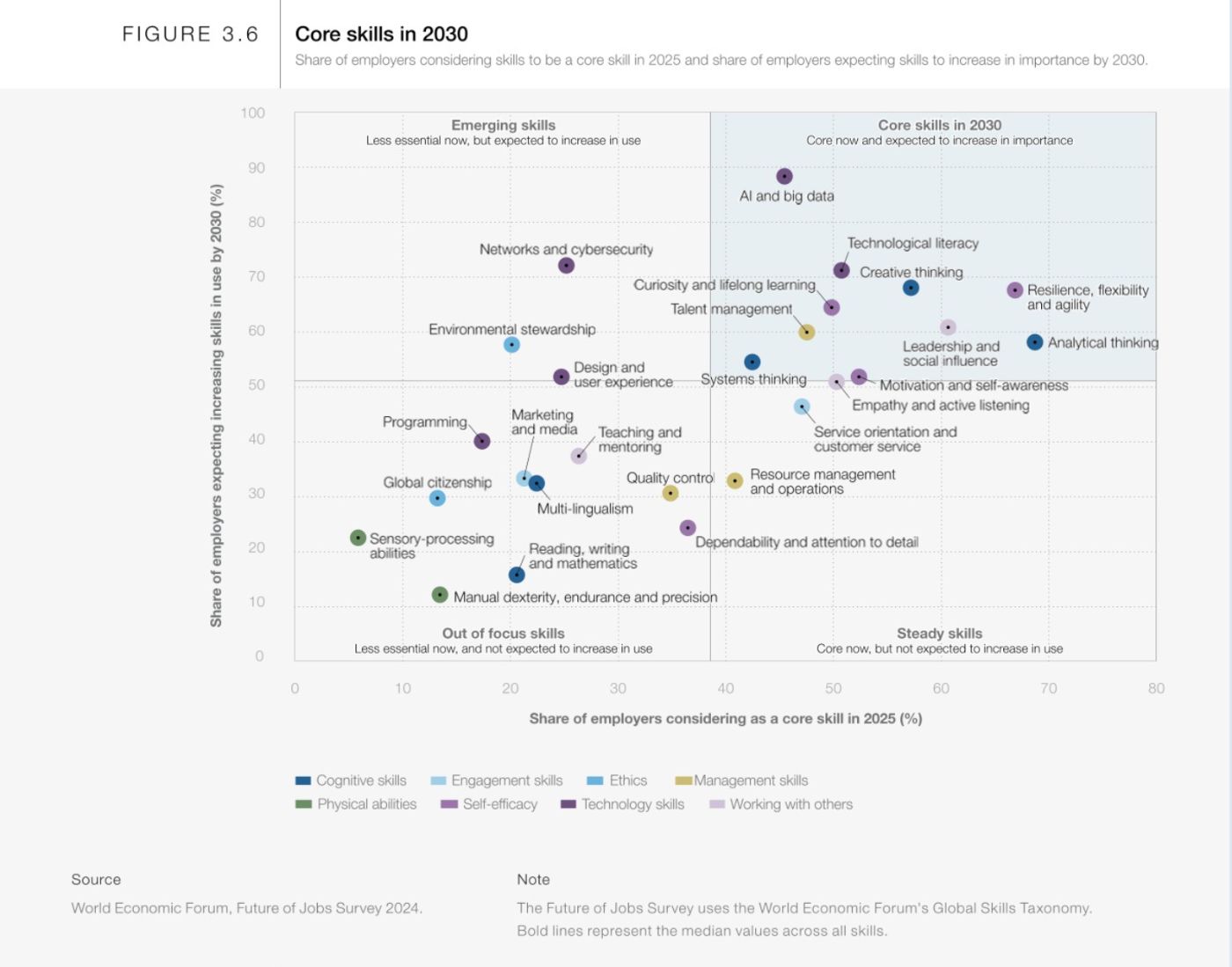
Workforce strategies 🕵🏽♀️
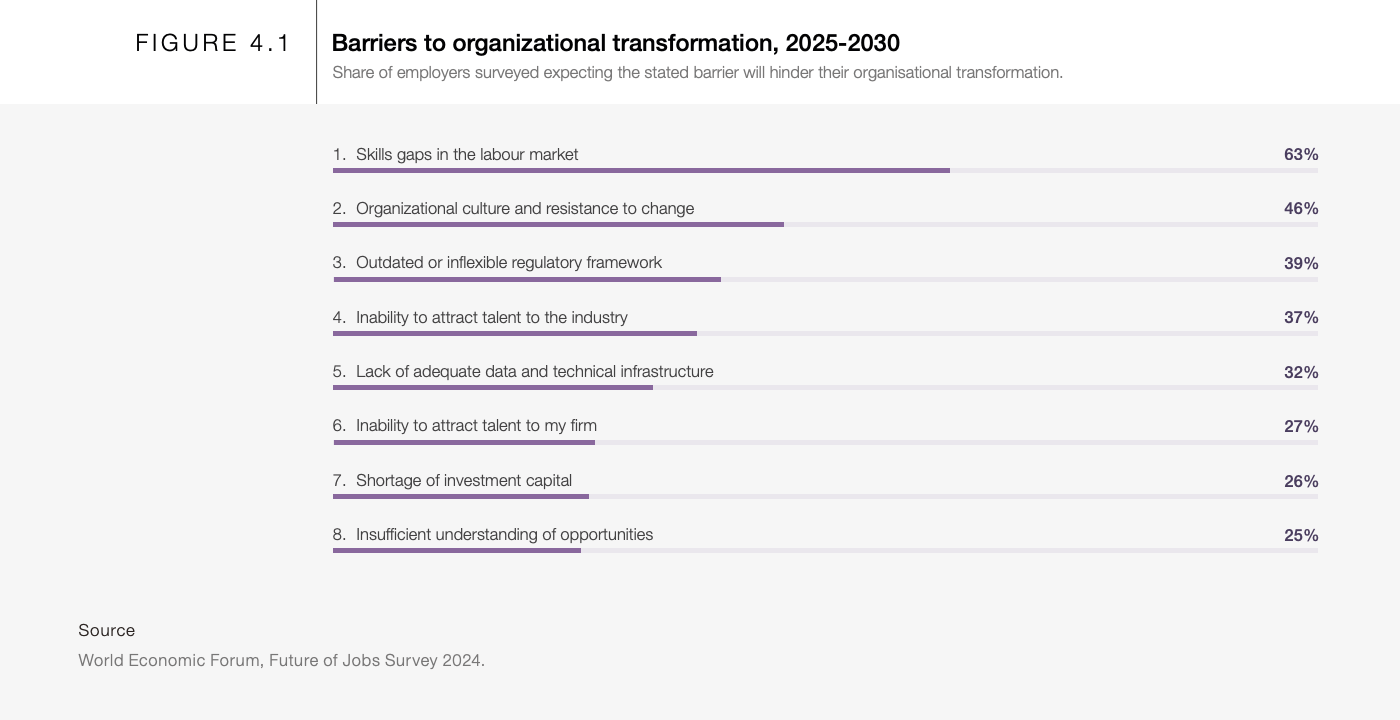
📌 The skills gap in the labor market (63%) is the biggest obstacle to digital transformation. Companies need to develop strategies for retraining their employees and attracting new talent.
📌 Resistance to change (46%) and corporate culture issues are among the biggest internal factors slowing down transformation. It is becoming critical for leaders to increase their ability to manage change.
📌 Regulations (39%) and lack of investment (26%) can delay innovation processes. Companies need to develop flexible strategies to manage these processes.
📌 Sectors (37%) and companies (27%) that have difficulty attracting talent should improve employee experience and develop competitive salary policies.
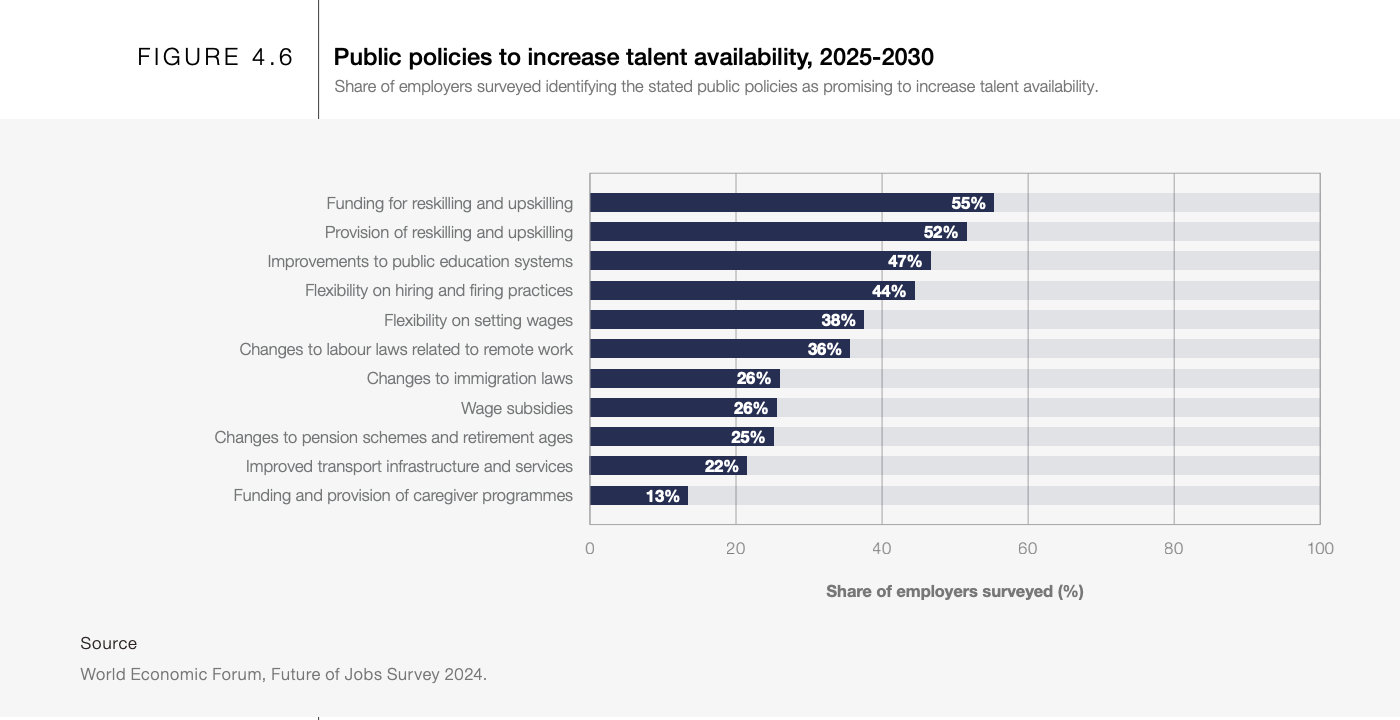
📌 Upgrading skills and financing retraining (55%) is the most critical solution to closing the talent gap. Companies should take advantage of government incentives and training programs to develop their employees.
📌 Modernizing education systems (47%) is seen as the most fundamental solution to improve long-term workforce quality.
📌 Flexibility in the labor market (44%) can make hiring and firing processes more dynamic.
📌 Changes to remote working laws (36%) have become an important factor to adapt to new working models.
📌 While changing immigration laws (26%) is a policy considered to increase labor supply, employers’ priority is education and skills development.
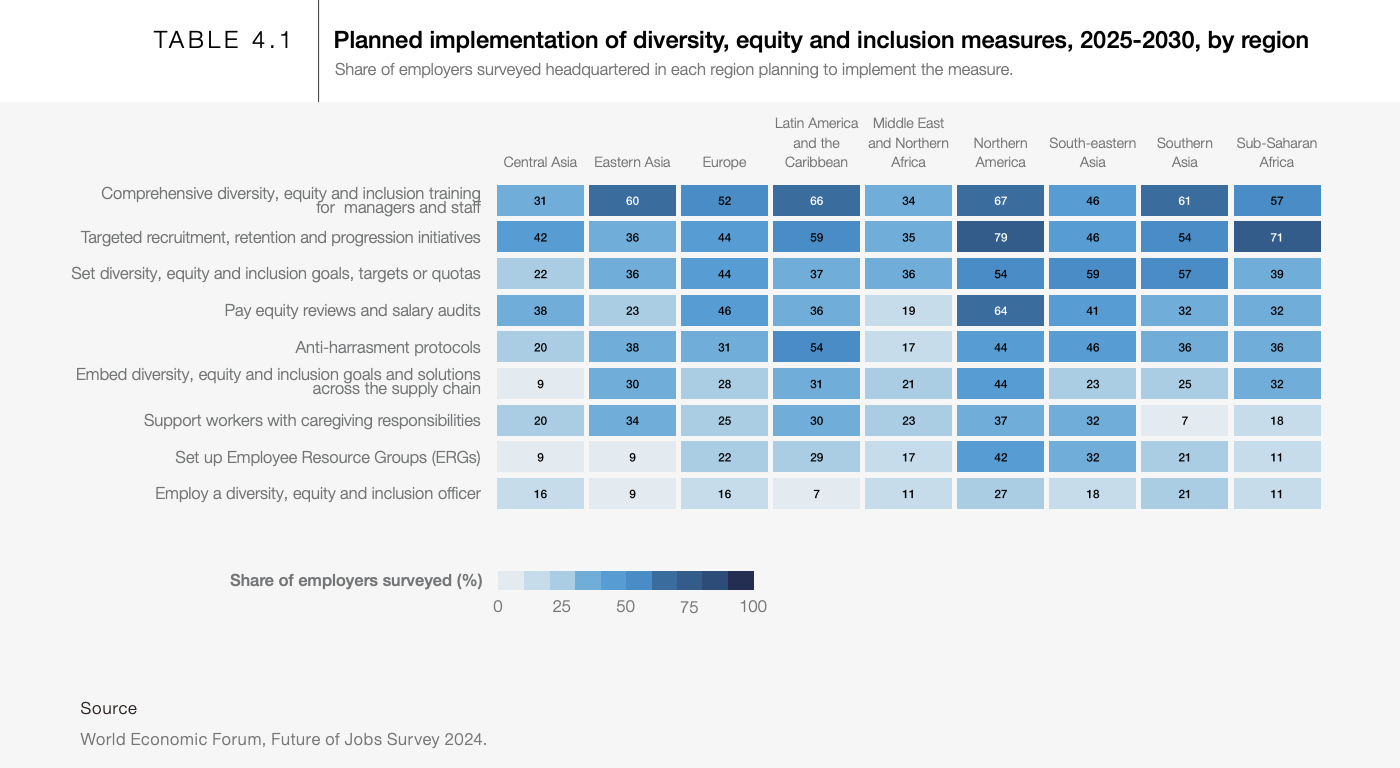
:::warning
Most Notable Differences by Region
📌 North America leads in DEI policy implementation rates.
It has higher implementation rates than other regions, especially in areas such as compensation audits (64%), recruitment strategies (79%), and training (67%).
📌 Central Asia has the lowest DEI policy implementation rates.
It falls well below the global average in areas such as ERG groups (9%), DEI officer appointments (16%), and salary audits (38%).
📌 Latin America and the Caribbean have high implementation rates, especially in areas such as anti-harassment protocols (54%) and hiring processes (66%).
📌 Southeast Asia and South Asia are above the global average in areas such as setting diversity goals (59%, 57%) and targeted hiring processes (46%, 54%).
:::
📌 Comprehensive DEI training will be implemented by 52%, indicating that raising awareness in the workforce is a priority.
📌 51% of employers plan to implement targeted recruitment and career development strategies, making inclusive hiring processes increasingly important.
📌 Pay equity and salary audits are planned by 41%, while such policies need to be developed in regions such as the Middle East & North Africa (19%).
📌 Anti-harassment policies will only be implemented by 36%, while this rate reaches 54 in Latin America and the Caribbean, revealing regional differences.
📌 Appointing a DEI officer has the lowest implementation rate by 16%, indicating that many companies are still hesitant to establish a direct leadership mechanism.
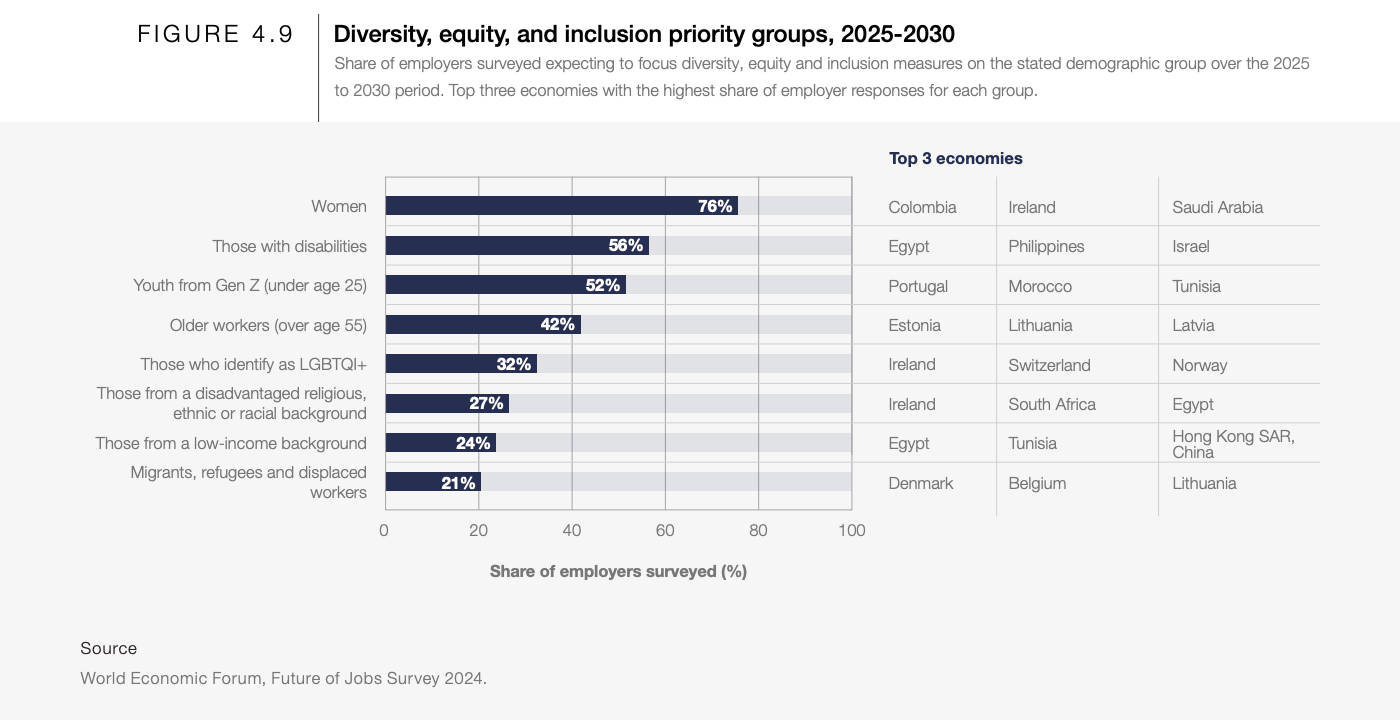
📌 Female employment and leadership stands out as the biggest initiative to increase gender equality in the business world, supported by 76% of employers.
📌 Disabled people will be supported in the workforce by 56%, indicating that inclusive work environments will become increasingly widespread.
📌 A balance is being struck between Gen Z (52%) and older workers (42%), employers are developing policies to support both young talent and experienced workforces.
📌 LGBTQI+ individuals (32%) and disadvantaged ethnic/religious groups (27%) are seen important in terms of workforce diversity, but more policies still need to be developed.
📌 Immigrants and refugees are the least prioritized group, supported by only 21%, indicating that barriers to global workforce mobility continue.
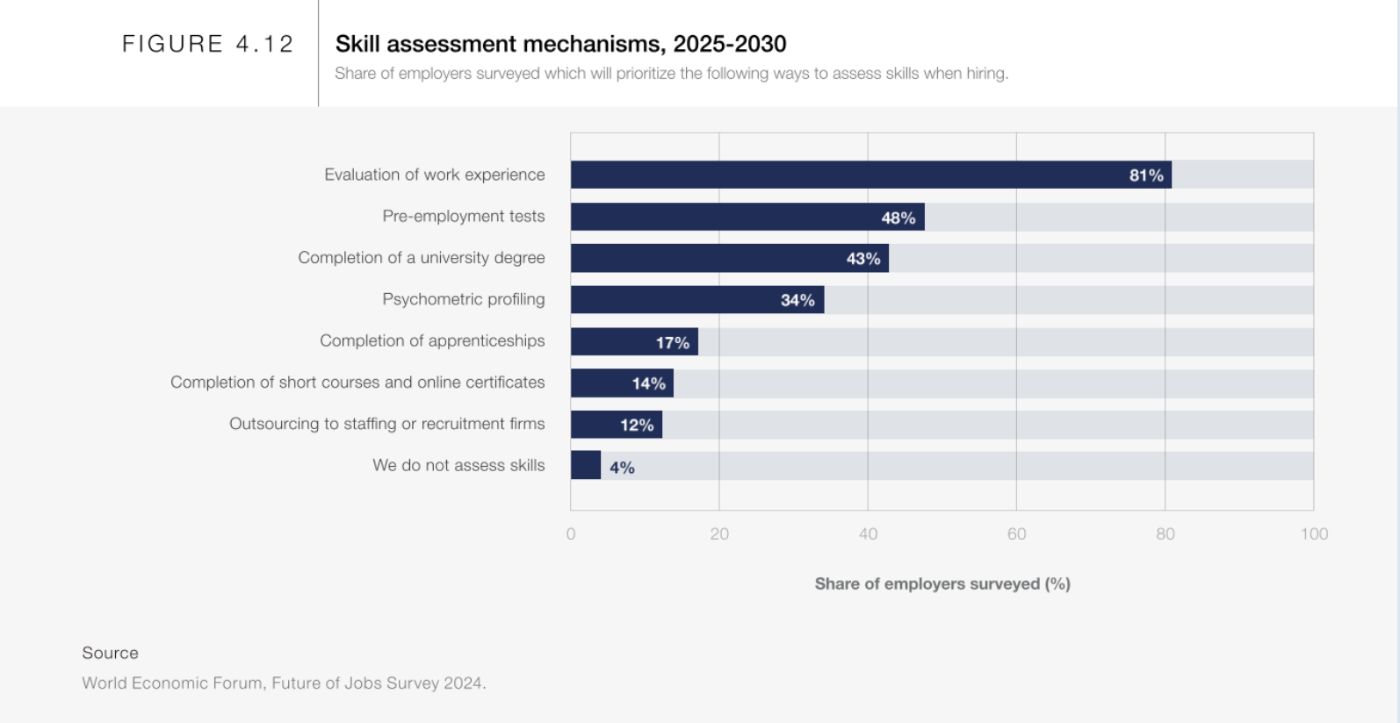
📌 Work experience continues to be the most important criterion in recruitment processes (81%), so candidates’ professional backgrounds and previous work experience will greatly influence their recruitment.
📌 Pre-employment tests are used as an assessment method by 48%, indicating that objective measurement systems are gaining importance.
📌 While a university degree is considered important by 43%, the priority given to work experience indicates that skill-based assessment will increase in recruitment processes.
📌 Online certificates and short courses are only seen as an assessment method by 14%, indicating that digital training is still not widely accepted in the business world.
📌 Only 4% of employers state that they do not assess talent, indicating that recruitment processes are largely based on measurable criteria
:::tip
📌 Experience is Eeeeeeeeeeverything! 81% 🧐
📌 Be Prepared for Tests!
📌 A Diploma is Not Enough!
📌 Psychometric Tests Are Increasing!
📌 Certificates and Online Trainings Can Make a Difference! Keep yourself up to date by acquiring new skills.
💡 Remember: The world of work is changing rapidly! Develop your experience, test your skills and take part in projects that will attract the attention of employers! 🔥
:::
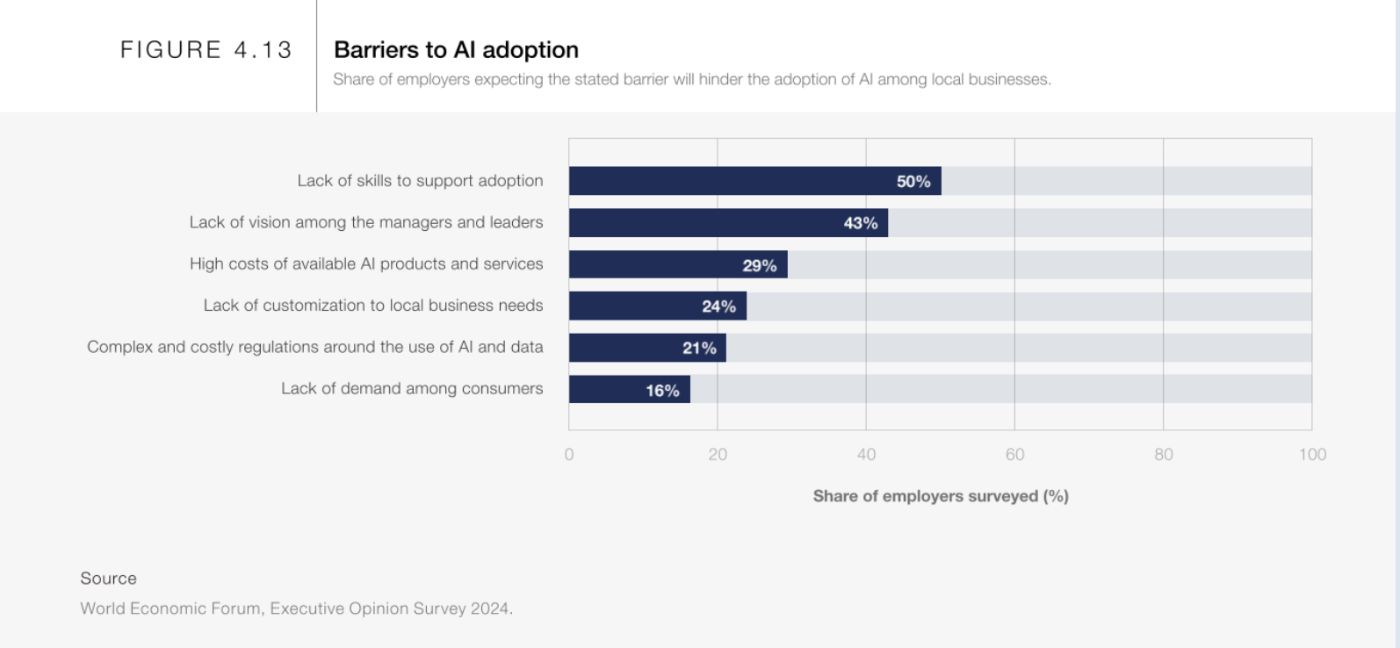
📌 The biggest obstacle is the lack of skills, at 50%. In other words, finding employes who can work with AI in the workforce is a big problem.
📌 43% of managers and leaders have difficulty embracing AI, indicating a lack of leadership in the transformation process of organizations.
📌 The cost of AI technologies (29%) and the lack of adaptation to local business needs (24%) make it difficult for companies to invest in AI solutions.
📌 Regulations and data management are seen as obstacles by 21%, meaning companies face difficulties with data privacy and compliance.
📌 Low consumer demand (16%) slows down the adoption of AI solutions in the B2C space
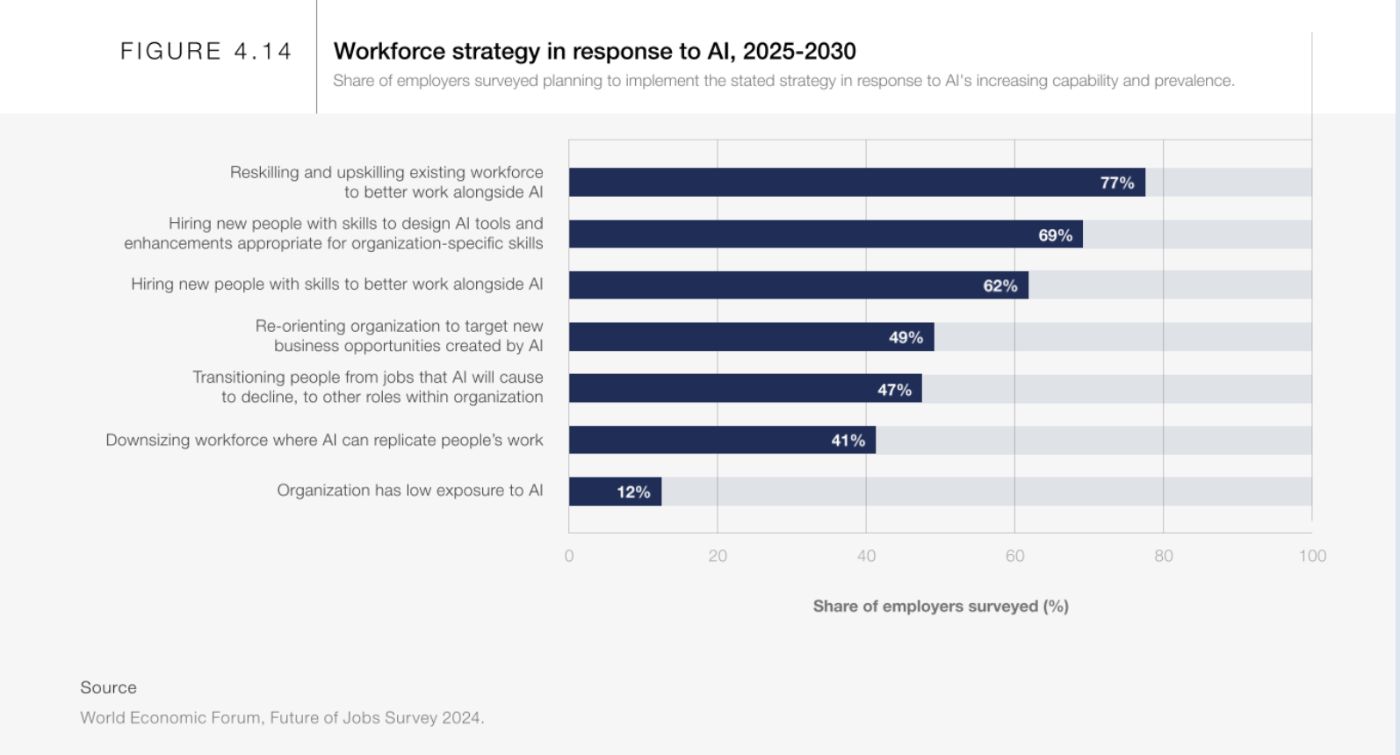
📌 The biggest obstacle to AI transformation is the lack of skills (50%), so companies’ strategies to retrain their employees (77%) and invest in AI talent (69%) come to the fore.
📌 Lack of vision among managers and leaders is seen as an obstacle by 43%, so not only the technical but also the leadership and management dimension of AI transformation becomes critical.
📌 41% of companies plan to reduce their workforce in areas where AI replaces human jobs, indicating that certain professions may be lost due to automation.
📌 The biggest financial obstacles to investing in AI technologies are high costs (29%) and the inability to adapt to local business needs (24%).
📌 Workforce strategies for AI integration focus on hiring new employees who can work better with AI (62%) and directing the company to new AI opportunities (49%).
References
https://www.weforum.org/publications/the-future-of-jobs-report-2025/
https://www.weforum.org/publications/the-future-of-jobs-report-2023/
\
\
Thank you for your time; sharing is caring! 🌍
\
February 5, 2025 at 12:41AM
https://ift.tt/AYGDJMv
Azize Sultan Palali
